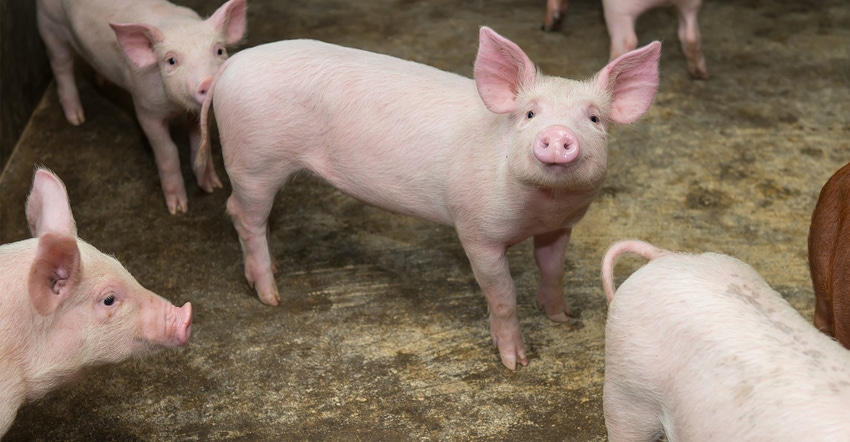September 25, 2017

By Brian Payne
You have the diagnostics in hand. The results tie your stomach in knots. The sample is porcine reproductive and respiratory syndrome virus, testing PCR-positive.
If you are lucky, you have not experienced this before. However, if you are like the other 99% of the people in the swine industry, you have had this feeling. But what now? Do you have enough information with this result to take your next steps?

Brian Payne

In brief, sequencing a PRRS virus polymerase chain reaction-positive sample, along with advanced diagnostic software and interpretation from your veterinarian, can help identify where the PRRS virus came from — and possibly how it got there. The goal is to make better diagnostic decisions and implement preventative biosecurity measures in the future.
PCR to the sequence
A positive PCR result means that lab technicians found PRRS viral RNA in the sample sent to them. The RNA may be from vaccine virus or may be from a field strain of PRRS virus. If it is the field strain, where did it come from? Fortunately, scientists have developed technology called nucleic acid sequencing to look further at a PRRS virus PCR-positive sample to identify the variant of PRRS virus, and allow us to look at the genetic makeup of the virus.
The power of a database and advanced diagnostic software
Sequence information from one variant, by itself, does not allow us to make many decisions. This is because it only represents a small portion of the virus and does not provide information on which vaccine to use, whether the pig is protected against PRRS virus, etc.
Simply put, it is an epidemiological tool. We must have other sequences so we can compare them. It is like a jigsaw puzzle. Having a single piece with no others surrounding it does not allow you to visualize the picture. With the entire sequence database, we can then start comparing your strain to others. We can see if they are genetically similar or different, and to what degree they are related. The more numerous the jigsaw pieces, or sequences, that are added to the database, the more interconnections that can be made; and therefore, the picture becomes clearer.
We use a software program called Disease Bioportal from University of California, Davis, to visually investigate our PRRS virus sequence database with mapping, charting, "family trees" called dendograms, timeline animations and reports. When there is a database of historic and recent PRRS virus isolates (a multitude of puzzle pieces) from a region or from a flow or from a single company, we are often able to make strong correlations. And like a jigsaw puzzle, should there not be enough puzzle pieces fitting together, the image and solution to where the PRRS virus came from may not be found.
Here are several successful examples of such database use:
• Improved biosecurity. Use of sequencing and Bioportal allowed us to track a PRRS virus from one state to another and then through five different farms. Investigations allowed us to understand that the PRRS virus was introduced via semen, was laterally shed between pigs, and was transported mechanically via shared agricultural equipment. This allowed for discussions on which biosecurity and prevention practices to be implemented.
• Wise resource use. Sequencing PRRS virus-positive PCR samples in three individual downstream finishers sourced from a single sow farm all became PRRS virus-positive within three weeks of one another. This showed that they shared a closely related variant. With thorough analysis, it was determined the three finisher farms could not have become infected at the same time from the sow farm. This allowed limited resources to be focused at the finisher farms and not at the sow herd.
• Panic eliminated. Generically, PRRS virus variants are given a three-digit ID called an RFLP (restriction fragment length polymorphism), such as 1-7-4 or 1-3-2. These are based off the genetic pattern of the virus and where specific enzymes (endonucleases) can react with the genetic material. However, while helpful at times, it can also be confusing. For example, one farm’s gilt iso-site came back with an RFLP of 1-1-4, one month after the sow herd was diagnosed with a 1-3-4 strain. Potential panic of having two strains involved was alleviated when we investigated further using Bioportal and determined that a minor mutation of the original strain caused the change in the RFLP. In other words, it was not a new virus.
We often recommend sequencing for PRRS virus, but not always. Talk with your veterinarian to help determine if this advanced diagnostic technology is beneficial for you and your business.
For any questions or concerns regarding this topic, please do not hesitate to contact our Pipestone team of veterinarians and swine specialist at 507-562-PIGS (7447).
Payne is a veterinarian at Pipestone Veterinary Services. Contact him at [email protected].
You May Also Like




